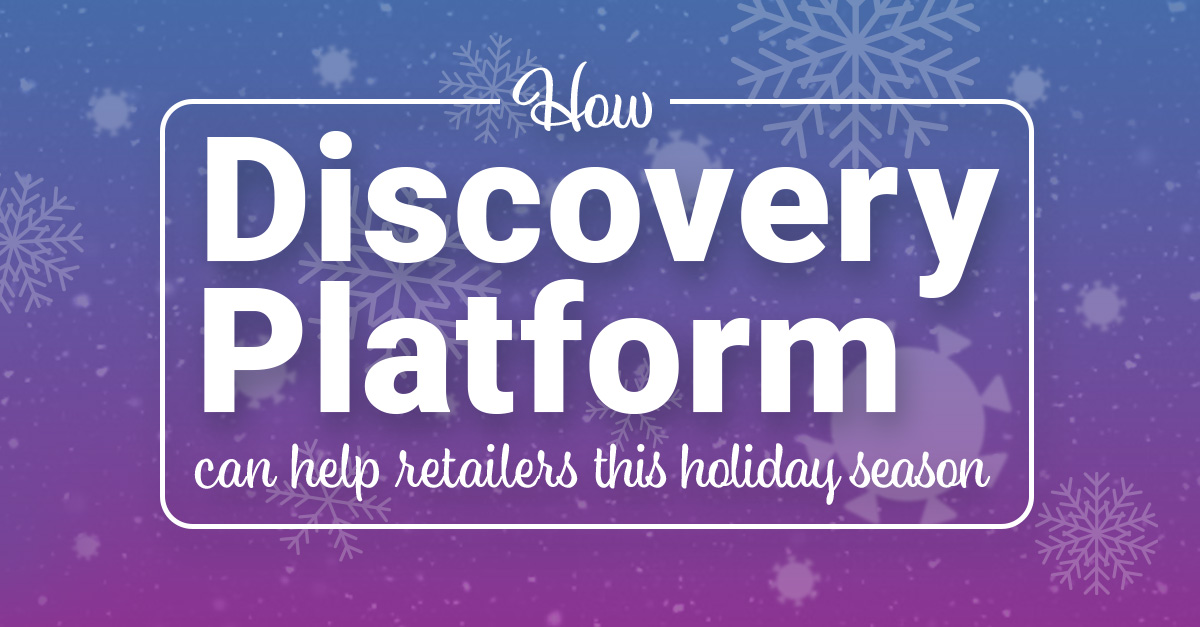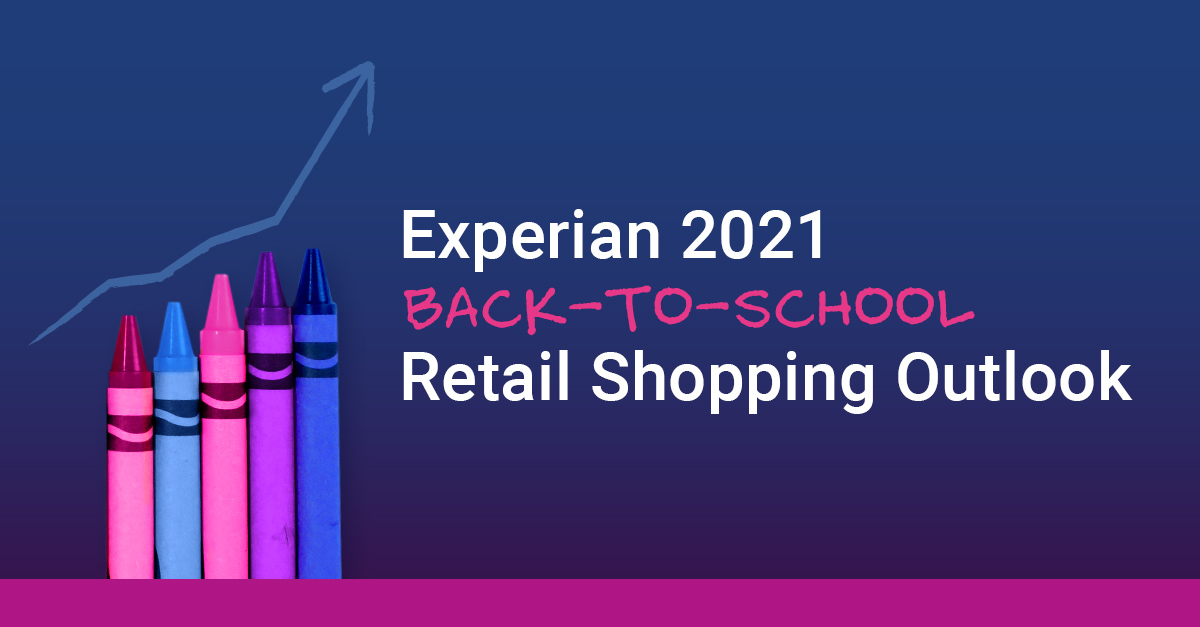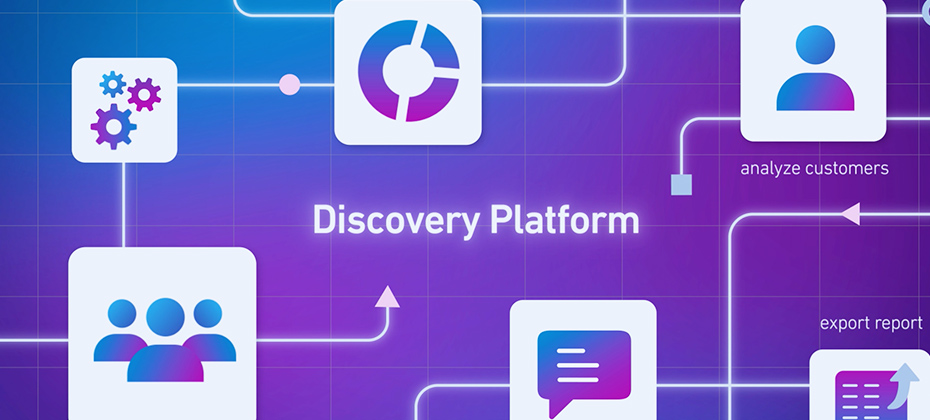Understand your customer
The latest insights in customer preferences, needs and behaviors, and tips for turning that insight into actionable marketing decisions.

It’s no secret that the COVID-19 Delta variant is threatening holiday plans across the country. As CDC mandates change and the flu season matures, we’re asking big questions that impact businesses and marketers across the country: Will customers mostly stay at home and order online? Or will people drive to the store and fly to family gatherings? The answer is probably both—but, as we’ve learned, a lot can change overnight. And we want to be prepared this time around. While many of us make vacation plans with a “wait and see” attitude, we want firmer footing at work. To cope with uncertainty, holiday marketing strategies straddle assumptions and require agility. To protect some of the biggest campaigns of the year, marketers need the ability to: Monitor changing customer behaviors during flu season. Track marketing KPIs for campaign performance and quick adaptability. Pivot audience targeting strategy when safety guidelines change. We built Discovery Platform to give you all three so that you can execute your marketing strategy with confidence. Discovery is built on top of robust consumer data and the best-in-class Identity graph that Experian is known for. It offers turn-key activation capability to keep your marketing campaigns agile and efficient this holiday season. Here’s how you can use Discovery Platform to protect your marketing interests from rapidly changing safety guidelines. Track store traffic against competitors Discovery Platform enables Experian clients to keep a tap on their store traffic and relate it to how competitors and overall business category is doing. Monitoring these trends can help marketers adapt to changing consumer behaviors as flu season evolves. Track marketing KPIs Tracking and adjusting ongoing campaign targeting strategy remains a top priority throughout the pandemic, especially during colder, winter months. Discovery enables you to evaluate your campaign targeting strategy in relation with your loyalty card shoppers and in-flight campaign KPIs to drive higher return on ad spend and Customer Lifetime Value. With Discovery’s OmniImpact integration clients can even conduct control test measurement studies. Pivot campaigns quickly You can use Discovery’s Audience Engine integration to build and deploy custom audiences to social, digital, email and Connected TV partners. This gives you the ability to quickly pivot campaign channels once you detect changes in consumer behavior or dips in campaign performance. The sales and customer data flowing into Discovery Platform puts all the insights you need in one place to inform your team’s next marketing strategy. Watch our Discovery Platform demo or contact us to learn how Experian can help you create more effective, agile marketing campaigns for the holidays.

As kids are packing their new backpacks and heading back to school, search trends and online behavior give insights about the things students (and their parents) care about this year.

Imagine an experiential self-driving car of the future. You step inside, select where you want to go and the best experience within the vehicle for your journey. Within seconds, it safely sweeps you away and drives you to your destination. If only marketing were that easy. At the tap of a console, you are able to identify the best parachute to glide your ads to the right audience, on the right platform. Well, what seems like a distant dream is Experian Marketing Service’s latest solution: Discovery Platform. To introduce Discovery, we asked Sunaina Chaudhary, Director of Product and Innovation, to describe how the solution facilitates effective marketing strategies. Discover more about your consumers. What is Discovery? What marketing challenges does it address? Anywhere you feel like you need to understand your customers, Discovery Platform can help. Whether you want to take your marketing to the next level or get on the road to recovery, Discovery is the solution. We created the Discovery Platform to help our clients overcome today’s advertising challenges, including gaps in data that impede identity linkage, limited internal resources and fragmented data. Think about all the touchpoints surrounding a customer in real life: connected TV ads, social media, email, flyers, digital ads . . . You can probably think of at least 15 off the top of your head. Discovery brings all those touchpoints together into a unified view of your customer. It combines disparate data insights to help you better understand your customers’ individual journeys and the most impactful touchpoints across offline, social and digital channels. Speaking specifically to a use case, in the most simplistic words, marketers can use Discovery to identify the right consumer, plan to reach them through the most optimal channel and create a consistent, relevant and personalized message. You can even leverage Discovery Platform’s seamless integration with our Audience Engine solution to build and deploy custom audiences to a variety of social, digital, email and Connected TV partners. The sales and other customer data flowing back into Discovery, all ties together for the marketing team to inform the next marketing campaign or strategy. Watch the Discovery Platform demo to learn more. Which business verticals does it benefit? Discovery Platform is apt for almost every vertical that I can think of - retail, agency, connected TV, publishers and financial institutions. Even though agencies don’t typically own first-party data, they can still benefit from Discovery through a one-stop shop for their RFP needs and the ability to activate the same audience with a click of a button. Clear cohorts you can activate—without privacy anxiety. Do marketers need to worry about consumer data privacy in the Discovery platform? No, when you’re in Discovery, you’re seeing the best and safest view of your customer cohorts. Marketers can rely on Experian to meet all compliance, governance and privacy standards. That’s taken care of by the time you see the data. Discovery is built on carefully curated and maintained data on 126 million households and 300 million individuals. You can leverage it for insights on over 2,000 consumer attributes such as demographics, home-owner status, shopping behaviors, media consumption habits and more. These are all tied to a unified identity made possible by our identity linkage. To do this, we help pull together your first-party data—along with whatever Experian datasets you license—to create a complete picture of your customer cohorts. It’s always-on, actionable insights you can subscribe to. What most excites you about the Discovery platform? We live in a world full of subscriptions—from TV streaming to food delivery. Data solutions of the past are transactional: you buy consumer data, leave it, and need to update it next week, month or quarter. Marketers have an ongoing need for more up-to-date data. That’s why we built Discovery Platform. World-class marketers need to be proactive when it comes to their customers and their business, which means having access to always-on actionable insights and analytics. Experian’s Discovery platform is here to make recurring market insights safer to access, and easier to collect and put into action. Here are 3 ways you can put Discovery to work for your marketing strategy: Subscribe! You get data-backed insights when you need them to stay up to date on what's happening with your business, customers and campaigns. For example, through mobile location data you can see which geographic areas of your market are returning to stores or still shopping online, glimpse competitor market share and more. Connect insights to your campaign. Discovery Platform is seamlessly integrated with Audience Engine to turn insights into action. This allows you to engage with your audiences via email, social, display, connected TV or whatever channels they prefer. Request a report. Not ready to subscribe? You can still get valuable on-demand reports, whether you have one or 25 target markets. Tell us your audience selection criteria, pick datasets for rich insights and Experian Marketing Services will give you actionable marketing insights for your business. Sign up for our newsletter to receive quarterly updates on what’s new at Experian Marketing Services.

QSRs have emerged as superheroes during the pandemic, creating an entirely different consumer experience in record time by offering contactless delivery, curbside pick-up, and other innovations that have allowed them to stay open and operational when so many other businesses have shuttered. But as many states are still moving through their phased re-opening plans and more options become available to consumers, QSRs are challenged with keeping their momentum going. How can they continue to build on their success? The key is activation. Advertising on the right channels at the right time. The more QSRs can offer experiences that leverage the power of data to better speak to their customers and address their unique needs, the better chance they have of continuing to succeed in these unwieldy times. As we move into the fall and winter, and as more and more people look to QSR’s to help with their meal plans, consider the following: 1. Use data to create a more robust loyalty program. There’s no question consumers have plenty of QSRs to choose from and using a loyalty program is an excellent way to ensure they continue to view you as a preferred dining destination. But you might be surprised to learn how much of a difference it can make to your bottom line. PYMNTS reported that in 2019, Starbucks President and CEO Kevin Johnson shared how the company’s active mobile app rewards membership grew to 16.8 million users, which comprised 41% of sales in U.S. stores. The PYMNTS Restaurant Readiness Index also shows that 79.5% of QSR customers and 47.5% of QSR managers see loyalty programs as a feature that is important to a restaurant’s success. Now is a great time to review your loyalty program (or create a new one) and see if you can expand it to offer more perks, thereby enticing more customer interaction. A strong loyalty program should include a combination of your own customer data, enriched with third-party data for deeper customer insights, such as behavior, lifestyle and interests. 2. Make it easy for customers to order, purchase and pick-up with mobile ordering. Mobile ordering is no longer the wave of the future—it’s part of the new now. PYMNTS reported that Dunkin’ Brands CEO Dave Hoffmann noted on-the-go ordering experienced an average weekly sales increase of 25% year over year—and this growth was especially key in locations without a drive-through. For customers who want an easy option that allows them to order, pay and pick-up at curbside, mobile ordering is the ultimate in simplicity, and your data can help you determine who is most primed to take advantage of this option so you can push it directly to them. 3. Offer demographic and location-specific promos. The power of data can help you know a lot about your customers, from age and occupation to whether or not they have a family, how they spend their time, and how much of that time is spent at your competitor’s restaurant. This data can help you craft promotions that can speak directly to your consumer, ensure you’re advertising on the channels they prefer and frequent and get them in your door. When you know you cater to parents who are tired of a long day of homeschooling and work Zoom meetings, you can tailor and execute a promo campaign that speaks directly to their needs and deliver it to their preferred channel, encouraging them to skip cooking and order from you instead. Or maybe you have locations that are close to college campuses, allowing you to entice students with a two-for-one deal they just can’t pass up. And as offices start the slow process of opening back up, there’s an opportunity to welcome workers back to the neighborhood with a special curbside or delivery pick-up deal. 4. Ensure your customer knows your brand values. More and more, consumers are becoming conscious of who they spend their money with and why. As Longitude Design points out, this is something Ben & Jerry’s does exceptionally well, and their value message is spread across everything the brand does, from their scoop shops to their store-bought pints to their company-branded events. This is your opportunity to share what you value as a company and a brand, and how it aligns with your consumer’s lifestyle. Is your food sustainably sourced? Is your packaging environmentally friendly? Be transparent about your supply chain, share how you care for your employees, give some insight into the prep process behind your food, as these insights will help your consumer gain trust in you, which in turn creates loyalty. Social media is a great way to get the word out about your value-based operational initiatives. To learn more about how you can use data to build on and enhance the new customer QSR experience, visit our Restaurant Marketing Solutions page.

Healthcare marketers: Open enrollment starts November 1st. Are you ready? It’s that time of year again—time to promote your insurance plans to existing and potential members ahead of open enrollment. But do you know your members beyond the basics? Sure, you know their name, address, phone number and email address, but do you know what communication channels they prefer? Do you know their lifestyle, behaviors and interests? In order for member communications to be effective, they need to be data-driven—first and foremost. The problem is, the industry is fragmented—and so is its data. With individuals covered by both private and public insurance plans—many payers don’t have access to a complete and accurate view of members and their respective data. And as the industry continues to move toward digital transformation and embraces automation, organizations that aren’t leveraging data insights are in danger of missing out on the opportunity to create a more solid connection with members. Partnering with a third-party data provider like Experian to enrich your first-party data is the answer. With a reliable source of data, health plans can more easily identify members, deduplicate their profiles, and leverage accurate contact information and communicate on a personal, relevant, empathetic level. Here are 5 ways to attract new members and retain existing members: 1. Create more accurate personas for marketing needs: Whether we use your data or combine yours with ours, you can gain stronger member analysis for segmentation and modeling that can help you maintain current relationships or expand your outreach to acquire new members—and ensure the loyalty of both categories. 2. Ensure the accuracy of member data: With Experian’s identity and data solutions, you can rest assured that your member database is accurate and up to date to maximize contact rates and minimize errors. 3. Build strong communication channels with your members: Optimize your advertising efforts through preferred channels—and identify those communication channels—to effectively connect with your customers using our data identifying their lifestyle, interests, behaviors and more. 4. Understand more about your members’ needs and behaviors: We’ll help you keep your members healthy. What do your members do, need, prefer? How much can they afford for healthcare? How do they live? You could guess, or you can let unbiased data guide your decisions so you can better assist your members in their health care goals. 5. Create a better member experience: With data and insights, Experian can give you the information you need to enable a consistent member experience, allowing you to match your products in a way that complements your member’s needs and lifestyle. Experian cuts through the data overload by focusing on data that matters and drives actionable decisions. With Experian on your side, you’ll be able to leverage the largest consumer database. We’re here to help you to manage a wide range of marketing needs, including measuring your campaign impact and determining the best messages to use to connect with your audience. We can also assist with securely managing your data in a way that helps to ensure the accuracy of that data to give you the most up-to-date picture of your current member database. Ready to learn more about our healthcare marketing solutions for open enrollment? Complete our online form and an Experian Marketing Services representative will reach out to you soon.

With the long-term effects to the economy unknown, many consumers are feeling the financial impact, while others are looking for opportunities, resulting in a transformational shift in spending. Some brands are experiencing decreased or paused marketing budgets, and you may be trepidatious about making the right decisions in your efforts to grow share of wallet. Recent events have been an impetus for change and we’re seeing brands make modifications to traditional marketing strategies. Some are developing innovative technologies and utilizing new sources of data and analytics. As we look at how these changes impact marketing results, we see the gap grow between those brands who are equipped to pivot and implement new strategies quickly, versus those who are not. So what steps can your organization implement now to make the smartest choices for both your customers and your business to secure more share of wallet? Here are four ideas to accelerate the success of your next financial marketing campaign: 1. Meet your customers wherever they are: Digital-first strategies have never been more relevant than they are right now. While consumers have fully embraced online engagement, marketers are even more focused on reaching high-value segments in the channels they utilize. By using an informed, data-driven strategy that includes preferred marketing communication channels and decision-making styles, engagement increases across those channels your target audience frequents the most. For example, are they heavy social media users? Do they prefer streaming TV? Or do they tend to rely on financial advice vs. performing their own research? To drive take rates, your audience must be exposed to a tailored message, in the right channel, and possibly multiple times. 2. Use messaging that resonates: As consumers refocus priorities, their expectations of brands with whom they do business are ever-increasing. Reflecting an understanding of the current needs and interests of your customers and prospects is an undertone that can only help strengthen their view of your brand. Consumer behavior has changed and is unlikely to revert to what was, so you want to be relevant, but you also do not want to be seen as ‘tone deaf’. As a result, consider revising your segmentation strategy to leverage predictive insights, such as household economic indicators, financial behaviors, lifestyle propensities and interests to help shape your message into one that truly makes an impact. 3. Prove the worth of your campaign: New consumer journeys are being formulated and showing ROI is imperative as your marketing budget is scrutinized. Having the right industry-relevant metrics and reports to analyze and share with leadership are key. Demonstrate that your campaigns are contributing to bottom-line success—and justify future campaigns—by using data-driven measurement insights collected across multiple reads and countless touchpoints. Marketing budgets are being scrutinized now more than ever, so showing ROI is critical. Having the right metrics and reports to analyze and share with leadership are key. 4. Follow government regulations—leverage Fair Lending-friendly audiences: Whether you’re cross-selling or prospecting, now is the time to identify the right audiences with rich data insights to not only execute impactful campaigns but adhere to government regulations that protect consumers and your organization. Trusting that the data you are activating follows Fair Lending Laws, including the Equal Credit Opportunity Act (“ECOA”) and the Fair Housing Act (“FHA”) is crucial. The Federal ECOA prohibits creditors from discriminating against credit applicants on the basis of several prohibited factors. Developing people-based segments that are not derived using these factors positions you to follow these regulations. Check out our previous blog post about Fair Lending-friendly audiences here. As you transition to new operating models, access to current and accurate consumer data can provide confidence in campaign potential, help you avoid business risk, enable you to respond to market changes and make better decisions. Experian can help you implement these strategies and put your brand unique position for growth. From start to finish, we provide the marketing solutions you need to plan, build and execute successful, Fair Lending-friendly campaigns to cross-sell to existing customers and acquire new customers. Learn more about Experian’s financial services marketing solutions here. *Experian Fair Lending-friendly audiences do not constitute legal advice or otherwise assure compliance with the FHA, ECOA, or any other applicable laws. It’s recommended to seek legal advice with respect to the use of data in connection with lending decisions or application and compliance with applicable laws.

There’s no question that COVID-19 has changed the shopping landscape forever. While the initial onset of quarantines and lockdowns negatively impacted brick and mortar retailers, online shopping soared to levels higher than 2019’s Black Friday/Cyber Monday extravaganza, accounting for $153 billion in spending over April and May1. Many consumers will continue to shop online for the foreseeable future for various reasons, which means marketers must have a greater focus on providing a positive online customer experience. Despite MSN Money’s claim that COVID may have made holiday shopping extinct2—in part because retailers such as Walmart, Target, Best Buy and more are keeping their doors closed on Thanksgiving—it turns out that’s not the case. According to polls taken by Chain Store Age, the pandemic hasn’t impacted consumers’ holiday spending plans, but it has affected how they intend to shop. This sentiment is echoed by Radial, who shared that 60% of consumers plan to shop less in-store this season. Even so, Salesforce noted that respondents to their poll found that consumers value safety and health above all else in their in-store shopping experiences, with 60% stating that social distancing measures were important to them3. So how can you navigate this new shopping normal and make the most of the 2020 holiday season? 1. Leverage data to strengthen communicationsData has always been an important component to a successful marketing plan, but it’s even more important now that shoppers are scattered across multiple devices and shifting their preference from offline to online—or a hybrid of the two. Connecting consumer identities across devices and channels means you can reach customers more effectively, promoting events, items and experiences that are most relevant to them on the channels they frequent most. You can also leverage mobile location data to understand consumer traffic patterns, including understanding which competitors they may visit. Not only will this help you to anticipate their behaviors, but you’ll learn more about their habits and preferences, which in turn helps you to craft messaging that speaks directly to their needs—and encourages their loyalty. 2. Be transparent in your messagingBrick and mortar holiday shopping isn’t totally out of the question this year, it’s just going to look a little different. If you’re still offering customers an offline experience, be open and honest with them about what they can expect. Use your outreach to share information about how you’re protecting employees, sanitizing the store, and making for a safer in-store experience so your customers feel comfortable walking through your doors. (The NRF has excellent resources to help you navigate this as required by state guidelines.)Also, let them know if there are any changes to shopping policies, such as wearing masks, contactless payment, the number of people allowed in the store at one time, return windows and more. The more transparent you can be in your messaging, the more comfortable customers will feel in keeping you in mind for their holiday shopping plans. And if your online business is booming, make sure you communicate any changes in fulfillment or shipping due to safety measures or delivery delays. This will be important messaging to those who may not be traveling to see family this year and are shopping online to have gifts shipped to their loved ones. 3. Offer positive new experiences and perksWhether you’re online or offline or both, customers will feel encouraged to shop when you offer them a little something extra to help make their shopping experience more enjoyable. Curbside pick-up has become an important aspect of this new normal in retail, so make sure you share with your customer whether that option is available to them. If “try before you buy” isn’t available like it may have been in the past, see what you can do to offer a similar experience—for example, many fashion retailers are offering virtual styling services that allow customers to connect with an expert for further insight on fits and cuts that may work for them (or the friends and family they’re shopping for). Some home furnishing retailers provide the ability to “visualize” an accessory or piece of furniture in your home.Free gift-wrapping services are always appreciated, as are in-store experiences for shoppers with kids (but they must be socially distant, of course). Be creative and use data to help inform your decisions so you can create perks and experiences that will really connect with your customer. Even with new challenges, retailers have the opportunity to offer a positive shopping experience through the holiday season and beyond, whether online or offline. And given the stressors of the season, it’s likely consumers will be shopping for themselves as much as they’re shopping for friends and family. As Business Insider put it, “…retailers will need to be more targeted and creative in their approach to Black Friday to get customers to spend,” and having the right data will be key. Download our new Holiday Marketing eBook for trends, tips and tricks to help you plan and execute powerful holiday marketing campaigns. 1https://theblog.adobe.com/online-shopping-during-covid-19-exceeds-2019-holiday-season-levels/ 2https://www.msn.com/en-us/money/companies/covid-19-may-have-made-thanksgiving-day-holiday-shopping-extinct/ar-BB17fmtm 3https://www.zdnet.com/article/covid-19-has-permanently-changed-shopping-behavior/

As the pandemic took hold of the country and stay-at-home orders were put in place, one of the consumer categories that was most adversely affected was the restaurant industry. But while sit-down restaurants were forced to pivot to curbside delivery and other inventive means to make ends meet, quick-service restaurants (QSRs) that already had a solid delivery program or drive-through in place saw a surge in new guests. “Dinner and a movie” took on a different meaning as people either picked up or ordered in to make date night happen, and QSRs rose to the occasion like never before. With some states beginning phased re-openings of non-essential businesses, some restaurants are now allowed to open so long as they follow social distancing rules or allow for outdoor dining areas. But that doesn’t mean consumers will be ready to race out and participate in this new dining experience. Many may remain apprehensive about safety and continue to “dine at a distance” until they’re confident that they can remain healthy, or until a successful vaccine goes into use. Even as states begin their phased re-opening plans, many continue to work from home—which has greatly affected both dine-in and QSR venues. Those who saw a robust lunchtime crowd probably saw a drop-off while business-based locals shifted their office plans. However, new opportunities have emerged for restaurants to reach out to their regular lunch crowd to offer delivery or attract a whole new lunch crowd who may not have thought to order from them before. Between the challenges of a post-pandemic world, a shifting of diner priority, and an uncertain future facing the restaurant world, it’s now more important than ever before to leverage an intelligent, data-driven marketing strategy to ensure your campaigns reach the right consumers, and also attract new customers to expand your customer base over time. All of this can be done using the power of data, but having the right data is key to making the most of your marketing efforts. As you’re crafting your current marketing plans, it’s important to look at all the variables you need to address to create more targeted messaging, thus helping you zero in on your most desired consumer base. The first thing to consider is, how well do you know your guests, and what do you know about them? If you have no insight into their dining habits or preferences, it will be challenging to come up with messaging that will speak to them. But with the right data, you can discover if they frequent your competitor’s locations (and if so, how often), which apps they’re using to order food, which days of the week, and even which meals they are most likely to order. You can also use this information to better understand how often you factor into your customer’s dining plans by understanding if they are beginning to commute again, or continuing to work from home, and if the latter, do they live near one of your locations. Data can also help you discover more about who they are, so you can even further tailor your messaging to their needs. Let’s say your target customer is married with children. Addressing their busy life as a professional and a parent, and sharing how you can ease the burden of dinnertime to make life easier for them, may be exactly the kind of message of support they need to encourage them to reach out to you. Using data based on demographics, lifestyle, behavior, attitudinal and mobile location data can help you cook up a marketing strategy with precision and success, resulting in more diners knocking on your door (or at least, calling for take-out). Another key component to consider is the use of mobile location data, which Zeta Global cites1 as being the most important data chain restaurants can use for their marketing plans. Not only can this data be used to better understand share of wallet and potential up-sell opportunities, but it can also be leveraged to reach out directly to potential new customers that have historically frequented your top competitors. You can also use mobile location data to connect with consumers who may be more drawn to your restaurant because of your delivery or curbside pick-up options, and craft outreach based on that information that will encourage them to order with you. As Hospitality Tech pointed out2, building trust in a post-pandemic world is key for QSRs who want to continue to encourage loyalty with current guests, and entice new ones to place orders. The key to making that happen is data. By deploying marketing messages that resonate, activating them on the channels your guests use most, then measuring the impact of your campaigns, QSRs can create more opportunities for success and customer connection that can translate into real, long-term results. Plus, the right data can help you increase store traffic with high value guests, reactivate guests who haven’t visited in a while and find new individuals who live nearby that closely resemble your current high value guests. Experian has decades of experience in helping organizations better communicate with their customers across all marketing channels. How can we help you? Find out more about our restaurant marketing solutions. 1https://zetaglobal.com/blog/chain-restaurants-need-customer-data/ 2https://hospitalitytech.com/new-marketing-communications-playbook-during-covid-19

With the growth of digital marketing and the targeting capabilities associated with online outreach, many predicted that this would mark the end of direct mail advertising. But if Millennials have anything to say about it, that’s not going to happen anytime soon. Yes, believe it or not, Millennials are driving the resurgence of direct mail advertising, and many leading brands are now pivoting their omnichannel marketing plans to include direct mail. And with the USPS reporting more than 75.7 billion in marketing mail volume in 2019, this trend shows no sign of slowing down. Including direct mail in your plans may give your brand a better chance of reaching your audience. Why? 1. Millennials actually like getting mail.While most of us have decried “junk mail” as being environmentally unfriendly or just a pain to deal with, Millennials actually enjoy physical mail. Valassis recently cited research from USPS Customer & Market Insights stating that Millennials spend the most time sorting mail (about six minutes compared to the average, which is four minutes), plus they’re opening mail and reading it (at eight minutes versus the average of seven minutes). Valassis also conducted a study that showed that 68% of Millennials read print ads or inserts from retailers, and 64% prefer getting them through the mail. So, while digital outreach may be convenient, it hasn’t completely decimated the desire for that old-school, hands-on experience of opening and reading something that’s addressed to you. 2. Millennials respond to a multi-channel approach.Oftentimes, marketers think of omnichannel as being a combination of digital and TV, but when you add print into the mix, it can make an even bigger impact on Millennial audiences. Valassis found that 60% of consumers are more likely to make a purchase after seeing an ad when it’s presented across both offline and online channels, while 72% of Millennial parents say print ads encourage them to go online and make a purchase from that retailer. 3. Millennials think physical mail makes for a more personal approach.You’d think that e-mail would feel more personal, but with the influx of spam most people get, that’s just not the case. In fact, 67% of people see physical mail as being more personal than an e-mail, with seven out of 10 saying they prefer receiving actual mail over digital mail. And for marketers looking to make a one-to-one connection, this is music to their ears. With changing marketing plans, the mailbox has less competition than the inbox. Getting a catalog at their door with the perfect offer at the perfect time helps the marketer make the direct connection. 4. Direct mail lasts longer than digital mail.That may seem like an obvious statement, but there’s more to it than you think. When an e-mail arrives in someone’s inbox, it’s easy to ignore it, read the subject line and forget about it, or even just randomly delete it, if spam filters don’t take care of that on their own. But the average lifespan of a piece of direct mail is 17 days, which may account for how direct mail generates purchases five times larger than e-mail campaigns. It’s harder to ignore when it’s in your house and you have to physically handle it as opposed to just clicking a mouse to get rid of it. 5. Millennials trust direct mail.It’s true—research shows that 90% of Millennials think direct mail advertising is reliable. Plus, Millennials are 24% more likely to show mail to others, compared to 19% of non-Millennials… which means if they find a deal they like in the mail, they’re probably going to spread the word. Visit our Retail Marketing Solutions page to learn more about how we can help you find new customers and have more meaningful engagements with existing ones.